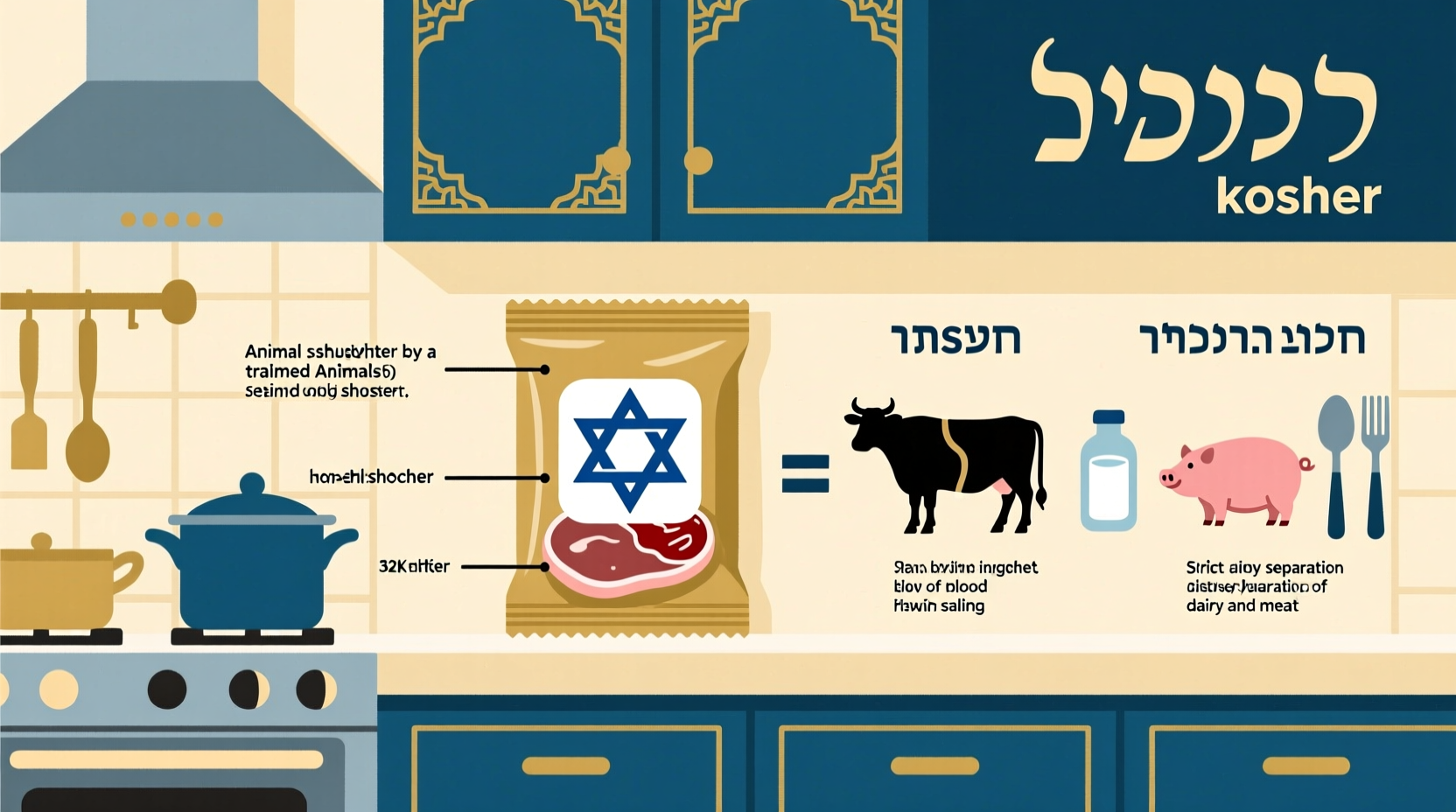Understanding what makes food kosher goes beyond simple dietary restrictions—it represents a centuries-old system of spiritual, ethical, and practical food guidelines that continue to shape Jewish life worldwide. Whether you're exploring kosher cuisine for religious reasons, cultural curiosity, or dietary preferences, this guide provides clear, authoritative information about the principles that define kosher food.
The Foundations of Kosher Food Laws
Kosher dietary laws originate from the Torah, specifically Leviticus 11 and Deuteronomy 14. These ancient guidelines establish which animals are permissible for consumption and how they must be prepared. The term "kosher" itself comes from the Hebrew word "kashér," meaning "fit" or "proper."
At its core, keeping kosher represents a spiritual discipline that connects daily eating habits with religious observance. For observant Jews, following these laws isn't merely about food safety or health—it's a mitzvah (commandment) that sanctifies ordinary acts of eating.
Kosher Animal Requirements: A Clear Framework
Not all animals qualify as kosher. The Torah provides specific identifying characteristics for each category of creature:
| Animal Category | Kosher Requirements | Common Examples |
|---|---|---|
| Land Animals | Must chew cud AND have split hooves | Cows, sheep, goats (NOT pigs, rabbits, camels) |
| Fish | Must have fins AND scales that can be removed without damaging skin | Salmon, tuna, carp (NOT shellfish, eel, catfish) |
| Birds | Traditionally permissible species (no biblical characteristics specified) | Chicken, turkey, duck (NOT birds of prey) |
| Insects | Only certain locust species (rarely consumed today) | Most insects are prohibited |
This classification system creates clear boundaries that have remained consistent for millennia. The National Jewish Center for Learning and Leadership confirms these requirements through their educational resources on Jewish dietary practices (clali.org/understanding-kashrut).
The Critical Process of Shechita: Kosher Slaughter
Permissible animals must undergo shechita—a specific method of slaughter performed by a trained shochet (ritual slaughterer). This process involves:
- A swift, uninterrupted cut across the throat with an impeccably sharp knife
- Severing the trachea and esophagus while minimizing pain
- Draining nearly all blood from the animal (as consuming blood is prohibited)
Following slaughter, a rigorous inspection (bedika) examines the animal's internal organs for abnormalities that would render it non-kosher (treif). The Orthodox Union, one of the world's largest kosher certification agencies, oversees this process in facilities worldwide to ensure compliance with traditional standards.

Meat and Dairy Separation: More Than Just a Rule
One of the most recognized kosher principles prohibits mixing meat and dairy products. This separation extends beyond meals to include:
- Separate utensils, cookware, and dishware for meat and dairy
- Waiting periods between consuming meat and dairy (typically 3-6 hours)
- Complete avoidance of any product containing both meat and dairy ingredients
This practice stems from the biblical commandment "Do not boil a kid in its mother's milk" (Exodus 23:19), which rabbinic tradition interprets as prohibiting any mixture of meat and dairy. Modern kosher kitchens maintain multiple sets of dishes and cooking equipment to uphold this separation.
Evolution of Kosher Certification Through History
Kosher food practices have adapted while maintaining core principles across different historical periods:
- Biblical Era (1200-500 BCE): Initial establishment of dietary laws in ancient Israel
- Rabbinic Period (200-500 CE): Development of detailed interpretations in the Talmud
- Medieval Era: Standardization of kosher practices across Jewish diaspora communities
- Industrial Revolution: Emergence of formal kosher certification for mass-produced foods
- Modern Era: Global kosher certification networks and standardized symbols
According to research from the Jewish Theological Seminary (jtsa.edu/kashrut-through-the-ages), the formal kosher certification system developed in response to industrialized food production, creating standardized supervision that could verify compliance across complex supply chains.
Practical Guidance for Identifying Kosher Food Today
Modern consumers can identify kosher products through certification symbols (hechshers) from recognized agencies. Common symbols include:
- OU (Orthodox Union) - Most widely recognized symbol globally
- Kof-K - Another major international certification
- Star-K - Prominent certification organization
- OK - Widely accepted kosher symbol
These symbols indicate that a product has undergone rigorous supervision throughout production. The level of supervision varies based on product complexity—simple ingredients like fruits require minimal oversight, while processed foods with multiple ingredients demand comprehensive monitoring of entire production facilities.
Contextual Boundaries: When Kosher Rules Apply
Understanding the scope of kosher requirements prevents common misconceptions:
- Kosher laws apply specifically to Jewish dietary observance, not general food safety
- Only foods consumed by observant Jews require kosher certification
- Non-food items (medications, cosmetics) have different guidelines
- Kosher status depends on preparation method, not inherent qualities of ingredients
- Passover introduces additional restrictions beyond standard kosher requirements
The American Jewish Committee clarifies that kosher rules function within specific religious contexts rather than serving as universal food safety standards (ajc.org/understanding-kashrut). This contextual understanding helps prevent misinterpretation of kosher practices as merely health-oriented rather than religious observance.
Common Misconceptions About Kosher Food
Several persistent myths surround kosher dietary laws:
- Myth: Kosher means food has been blessed by a rabbi
Reality: Kosher status depends on compliance with specific preparation rules, not blessing - Myth: All Jewish people keep kosher
Reality: Observance varies widely across Jewish denominations and individuals - Myth: Kosher food is inherently healthier
Reality: While some aspects promote food safety, kosher isn't a health certification - Myth: "Kosher-style" means the same as kosher
Reality: True kosher requires rabbinical supervision, not just similar preparation
Practical Considerations for Modern Kosher Observance
For those exploring kosher practices, consider these practical aspects:
- Check ingredient lists for hidden non-kosher components like gelatin or certain food colorings
- Understand that kosher certification applies to the entire production process, not just ingredients
- Recognize that vegan products aren't automatically kosher (processing equipment matters)
- Learn to identify reliable kosher certification agencies in your region
- Consult local rabbinic authorities for specific questions about unusual food situations
Many contemporary kosher certification agencies maintain online databases of approved products, making it easier than ever to navigate kosher food choices in diverse culinary landscapes.











 浙公网安备
33010002000092号
浙公网安备
33010002000092号 浙B2-20120091-4
浙B2-20120091-4